Bosun Higgs
New Member
An adapted Taylor Hobson 133mm f2 Ultimum, a 35mm cinema projection lens, used on a Sony A7rII (FF).

Pretty typical surface wear for an Ultimum, note almost complete loss of chrome plating on rear tube.
Ultimums are one of Taylor Hobson's premier cinema lens ranges, the other being the the strangely proportioned Aperful line. Most top-of-line lens ranges tend to be around f2 at 100-120mm and then gradually decrease the f-stop in stages as the focal length increases. This 133mm is about the longest Ultimum with an f2 stop, the aperture dropping to f2.3 for the 152mm, so it's at the "peak" blur/bokeh-wise.
Ultimums are classic Petzval designs, front cemented doublet and rear air-spaced pair.
This particular lens has seen a lot of use, the black paint finish to the front is largely worn away and the chromium plating of the rear tube is totally gone. For some reason these lenses always show a lot of surface wear, I have them in a range of focal lengths and only one of them retains most of its finish. Quite how static cinema projection lenses get enough abrasion to completely remove their chrome plating is beyond me!
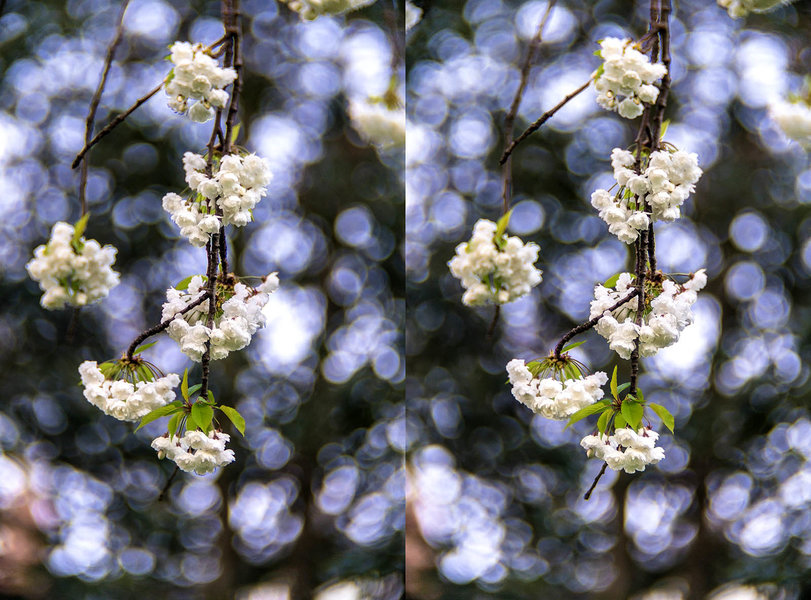
At longer subject foci bokeh bubbles are smaller and have more defined rims, which can be coloured.
Another common ageing problem with Ultimums is that the black paint on the spacer between the rear elements flakes off. The paint pieces are trapped inside the doublet and move around, just like the chaff in a Kaleidoscope. All of my Ultimums bar one had this problem, and it drove me crazy as the rear group holder has an unusual construction, and I could not get the elements apart. It took three years after my first Ultimum to finally find a way to open the rear group without destroying the glass, now the paint flecks are gone, and my inner picture straightener is content!
The lens body is solid brass throughout, so this is a heavy beast, it weighs 795g, whereas an aluminium bodied Taylor Hobson Hypertal (another Petzval) of similar FL weighs only 475g. Despite the weight, the lens handles well on my A7rII, it is perhaps a little forward heavy when focusing, as the helicoids are all at the back.
The lens is coated and the standard of the internal blackening is very good, this is one of the few lenses I have not had to internally recoat with Black 3.0, so native contrast is good.
For folk here who have not migrated from the DPR forum, and may not have seen them before, my images are stereo pairs that can viewed in 3D with the naked eye using the "crossed eye" technique. As my images are meant to show depth in the bokeh effects, I call these kind of images "stereokeh".
The lens is pretty sharp for an ancient Petzval (at least centrally), and I have seen no fringeing or glow. It does not show the common Petzval "focus spread" caused by spherical aberration, subjects pop into sharp focus. It does however, show the usual Petzval heavy field curvature :O)
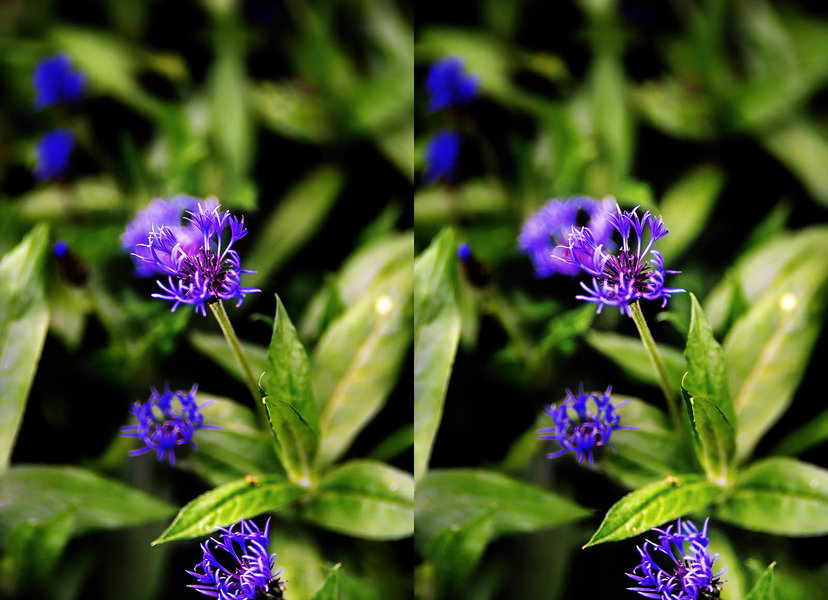
Note flowerhead at bottom, the field curvature has brought this into equal focus with the main subject.
There is some vignetting in the extreme corners on FF, but this is caused by the restrictive E-mount throat and not the lens, as it was designed for 35mm.
The Bokeh
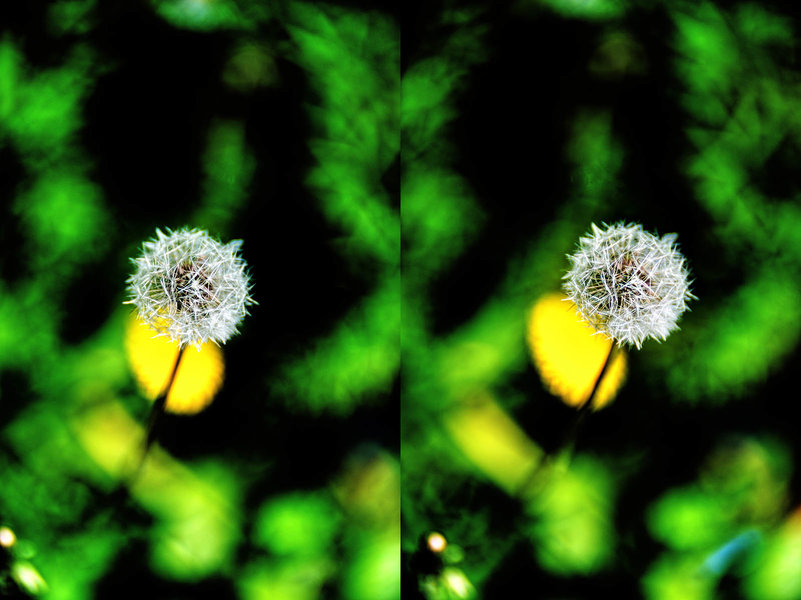
Dandelion clock with Dandelion flower behind.
The lens produces large bokeh bubbles with specular sources, these have some outling, but it is broad and soft. The bubbles tread a kind of middle ground when superimposed, halfway between stacking and blending. Given their size at close to medium focus, this produces a kind of large scale "fluffy" texure to the background bokeh which I find very attractive.
With longer focus subjects the bubbles are obviously smaller, the outling is more defined, and this can be coloured, but detailed backgrounds never get "busy" they way they can with some lenses of this type.
The bubbles do catseye in the frame corners, but the deformation is mild and only begins in the corners themselves. This has consequences for swirl, and sure enough, there is very little. There are some hints of swirl at some focus/background distance ratios, but this lens is definitely no spindryer.
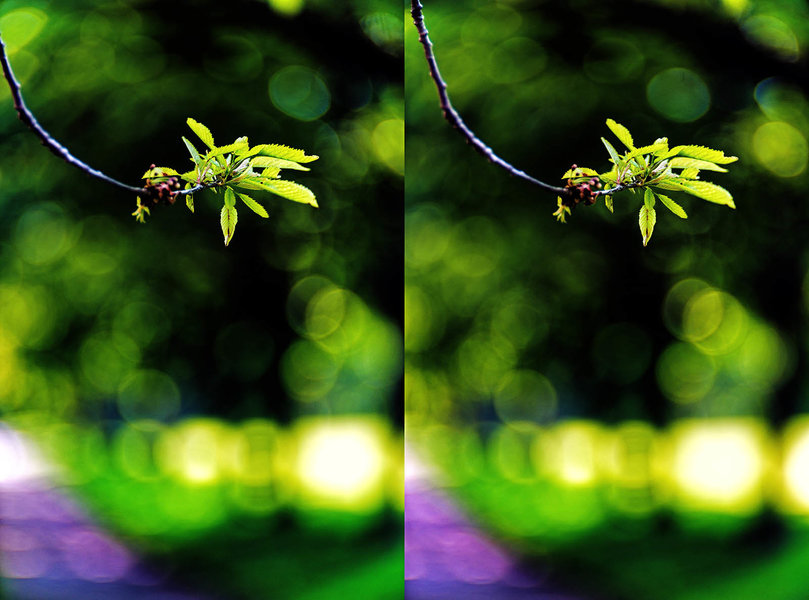
The background here is an avenue of trees and a path (bottom left), but they are unrecognisable after the lens has bokeh-fied them. Focus is about head-and-shoulders portrait distance.
At "head and shoulders" portrait focus, backgrounds are converted into soft washes of colour and are unrecognisable (see samples).
As many will be looking at these lenses for portrait use, I wish I could take appropriate shots of this, but sadly I have had the photography bug for many decades now and my family members all developed modelling resistance surprisingly quickly :O(
The Ultimums are some of my favourite "bokeh" lenses, I have quite a few of them, and they get a lot of use.

- Canon - Canon PowerShot G12
- 6.1-30.5 mm
- 7.4 mm
- ƒ/2.8
- 1/30 sec
- Pattern
- Manual exposure
- 1
- ISO 200
Pretty typical surface wear for an Ultimum, note almost complete loss of chrome plating on rear tube.
Ultimums are one of Taylor Hobson's premier cinema lens ranges, the other being the the strangely proportioned Aperful line. Most top-of-line lens ranges tend to be around f2 at 100-120mm and then gradually decrease the f-stop in stages as the focal length increases. This 133mm is about the longest Ultimum with an f2 stop, the aperture dropping to f2.3 for the 152mm, so it's at the "peak" blur/bokeh-wise.
Ultimums are classic Petzval designs, front cemented doublet and rear air-spaced pair.
This particular lens has seen a lot of use, the black paint finish to the front is largely worn away and the chromium plating of the rear tube is totally gone. For some reason these lenses always show a lot of surface wear, I have them in a range of focal lengths and only one of them retains most of its finish. Quite how static cinema projection lenses get enough abrasion to completely remove their chrome plating is beyond me!

- SONY - ILCE-7RM2
- ----
- 1/1000 sec
- Pattern
- Auto exposure
- ISO 1600
At longer subject foci bokeh bubbles are smaller and have more defined rims, which can be coloured.
Another common ageing problem with Ultimums is that the black paint on the spacer between the rear elements flakes off. The paint pieces are trapped inside the doublet and move around, just like the chaff in a Kaleidoscope. All of my Ultimums bar one had this problem, and it drove me crazy as the rear group holder has an unusual construction, and I could not get the elements apart. It took three years after my first Ultimum to finally find a way to open the rear group without destroying the glass, now the paint flecks are gone, and my inner picture straightener is content!
The lens body is solid brass throughout, so this is a heavy beast, it weighs 795g, whereas an aluminium bodied Taylor Hobson Hypertal (another Petzval) of similar FL weighs only 475g. Despite the weight, the lens handles well on my A7rII, it is perhaps a little forward heavy when focusing, as the helicoids are all at the back.
The lens is coated and the standard of the internal blackening is very good, this is one of the few lenses I have not had to internally recoat with Black 3.0, so native contrast is good.
For folk here who have not migrated from the DPR forum, and may not have seen them before, my images are stereo pairs that can viewed in 3D with the naked eye using the "crossed eye" technique. As my images are meant to show depth in the bokeh effects, I call these kind of images "stereokeh".
The lens is pretty sharp for an ancient Petzval (at least centrally), and I have seen no fringeing or glow. It does not show the common Petzval "focus spread" caused by spherical aberration, subjects pop into sharp focus. It does however, show the usual Petzval heavy field curvature :O)

- SONY - ILCE-7RM2
- ----
- 1/160 sec
- Pattern
- Auto exposure
- ISO 800
Note flowerhead at bottom, the field curvature has brought this into equal focus with the main subject.
There is some vignetting in the extreme corners on FF, but this is caused by the restrictive E-mount throat and not the lens, as it was designed for 35mm.
The Bokeh

- SONY - ILCE-7RM2
- ----
- 1/4000 sec
- Pattern
- Auto exposure
- ISO 200
Dandelion clock with Dandelion flower behind.
The lens produces large bokeh bubbles with specular sources, these have some outling, but it is broad and soft. The bubbles tread a kind of middle ground when superimposed, halfway between stacking and blending. Given their size at close to medium focus, this produces a kind of large scale "fluffy" texure to the background bokeh which I find very attractive.
With longer focus subjects the bubbles are obviously smaller, the outling is more defined, and this can be coloured, but detailed backgrounds never get "busy" they way they can with some lenses of this type.
The bubbles do catseye in the frame corners, but the deformation is mild and only begins in the corners themselves. This has consequences for swirl, and sure enough, there is very little. There are some hints of swirl at some focus/background distance ratios, but this lens is definitely no spindryer.

- SONY - ILCE-7RM2
- ----
- 1/800 sec
- Pattern
- Auto exposure
- ISO 400
The background here is an avenue of trees and a path (bottom left), but they are unrecognisable after the lens has bokeh-fied them. Focus is about head-and-shoulders portrait distance.
At "head and shoulders" portrait focus, backgrounds are converted into soft washes of colour and are unrecognisable (see samples).
As many will be looking at these lenses for portrait use, I wish I could take appropriate shots of this, but sadly I have had the photography bug for many decades now and my family members all developed modelling resistance surprisingly quickly :O(
The Ultimums are some of my favourite "bokeh" lenses, I have quite a few of them, and they get a lot of use.
Last edited:

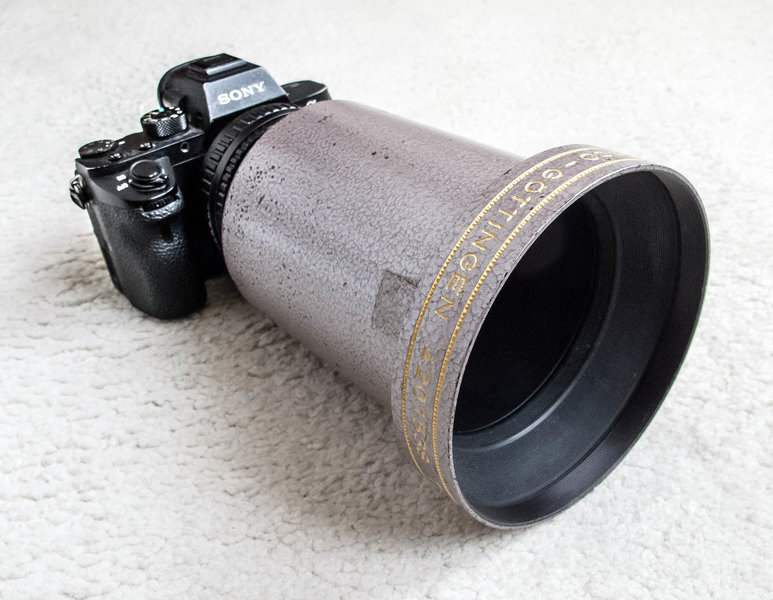
 A magnificent 3D
A magnificent 3D 